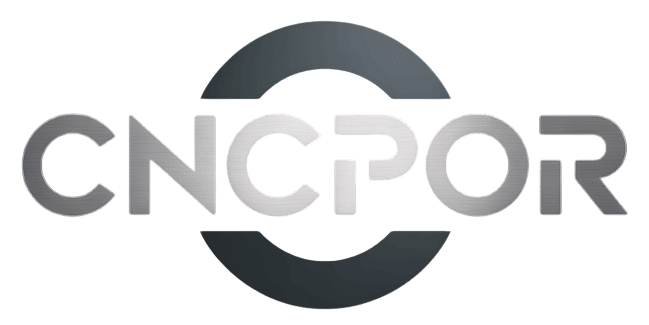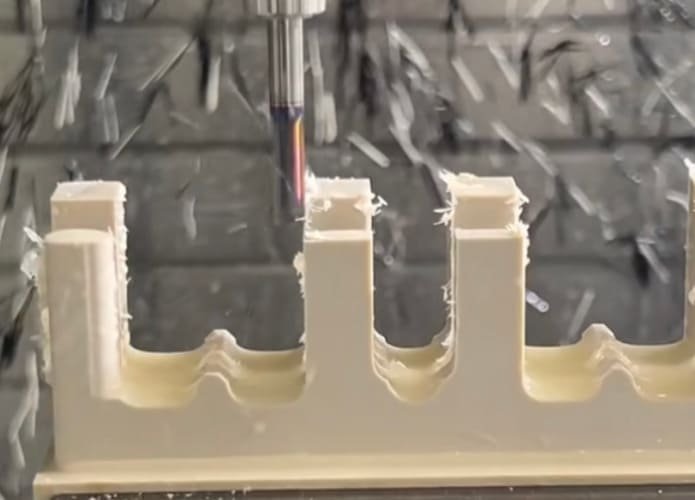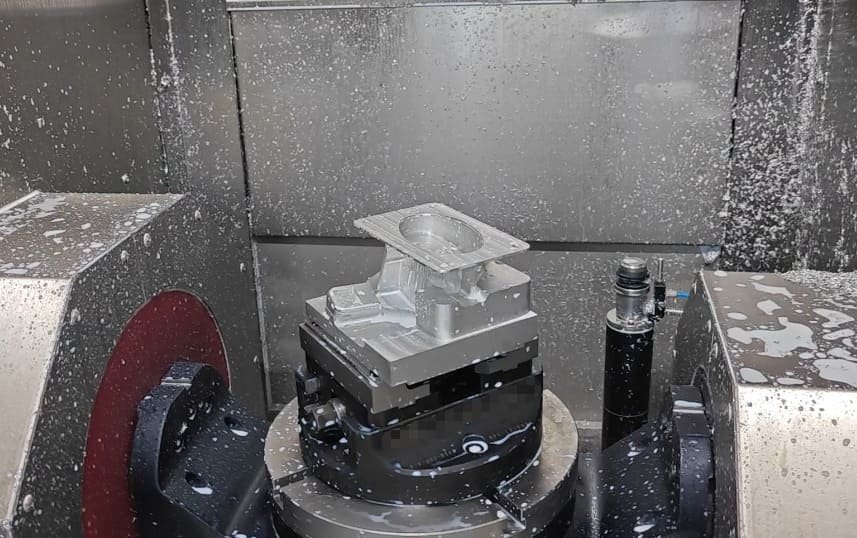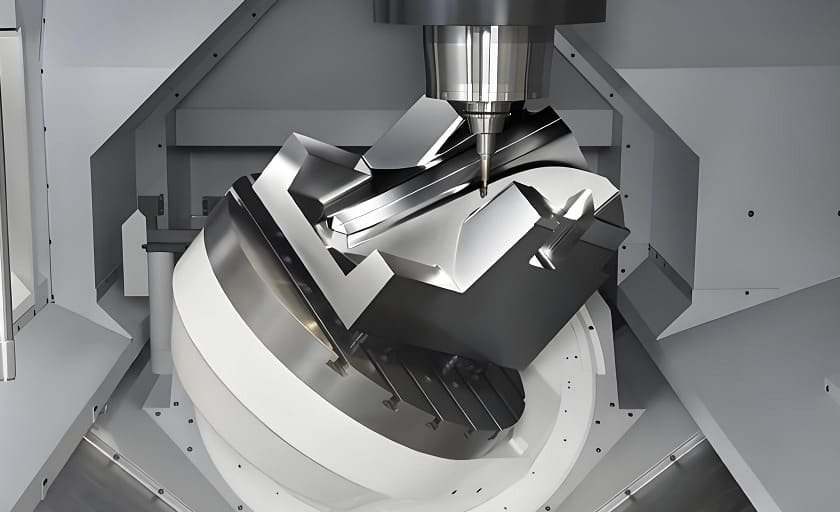Turn-milling machining is an advanced manufacturing technology that ingeniously integrates two distinct machining processes—turning and milling—into a single machine tool. This integrated machining approach allows for the completion of multiple complex operations in a single setup, significantly enhancing machining efficiency, precision, and flexibility. The technology is widely applied in industries demanding extremely high part precision and complexity, such as aerospace, medical devices, and automotive manufacturing.
Over the years, I’ve visited many factories that carry out turn – mill composite machining. Through conversations with their workshop directors and by referring to relevant materials, I’ve conducted a detailed investigation into turn – mill composite technology. This article sums up what I’ve learned, covering its basic concepts, working principles, advantages, application fields, and future development trends.
Basic Concepts and Working Principles of Turn-Mill Composite Technology
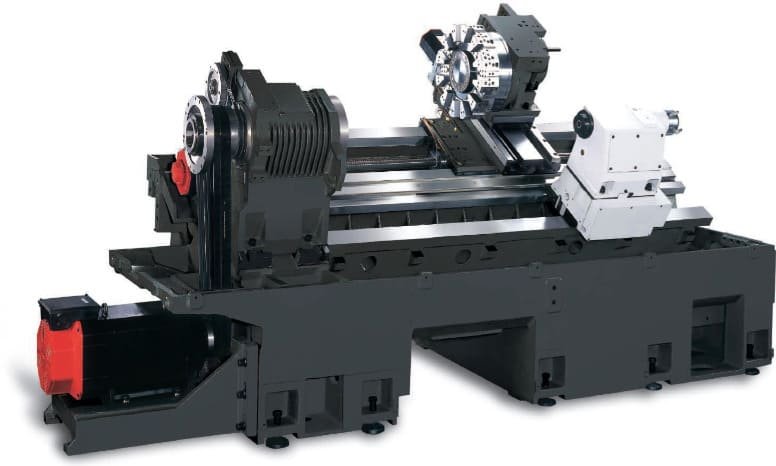
Fundamental Concepts
“Turn-milling,” as the name suggests, is the organic combination of two machining processes: turning and milling. Traditionally, turning machines are primarily used for machining rotationally symmetrical parts, removing material through high-speed workpiece rotation and axial or radial tool feed. Milling machines, on the other hand, achieve the machining of complex shapes such as planes, curved surfaces, and grooves through high-speed tool rotation combined with workpiece or tool feed movements. Turn-milling machines integrate these two core functions, allowing a workpiece to undergo turning, milling, and even drilling, tapping, and other complex machining operations in a single setup.
Operating Principles
Turn-milling machines typically possess the following key features to realize their unique operating principles:
- Dual-spindle or Multi-spindle Systems: These systems enable simultaneous or alternating turning and milling operations on the same machine, greatly enhancing machining efficiency and flexibility.
- Y-axis Functionality: In addition to the traditional X (transverse) and Z (longitudinal) axes, the inclusion of a Y-axis (feed perpendicular to the main spindle direction) allows milling tools to perform more complex, non symmetrical shape machining, expanding the scope of operations.
- Powered Turret or Independent Milling Spindle: The turret integrates rotatable powered tools, or the machine itself is equipped with an independent milling spindle, specifically designed to drive milling tools for high-speed rotary cutting.
- High-precision Indexing or Continuous Rotation Function: Beyond high-speed rotation for turning, the workpiece spindle can also perform precise angular indexing or low-speed continuous rotation. This capability, combined with milling tools, enables the machining of complex geometric features such as multi-faceted parts and eccentric holes.
The operational workflow can be summarized as follows: In turning mode, the workpiece rotates at high speed, and the cutting tool performs feed movements to remove material. In milling mode, the workpiece can either stop rotating or perform low-speed indexed rotation, while the milling tool rotates at high speed and performs feed cutting. The entire machining process is precisely coordinated and controlled by an advanced Computer Numerical Control (CNC) system for each axis and spindle, achieving seamless transitions and efficient compound machining between turning and milling operations.
Advantages of Turn-Mill Composite Technology
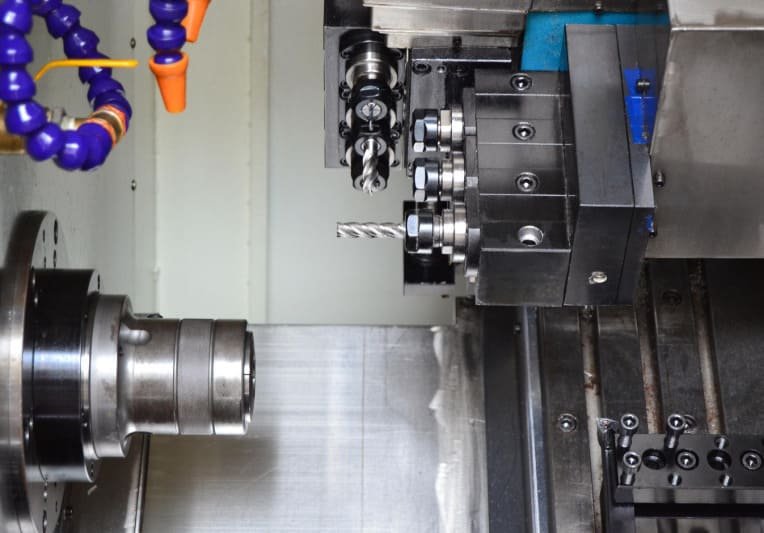
Compared to traditional machining methods, turn-milling technology offers significant advantages, primarily in the following aspects:
Shortened Manufacturing Process Chain, Enhanced Production Efficiency
Turn-milling machines can complete all or most of the manufacturing processes for a product on a single machine. This eliminates the need for frequent workpiece transfers between different machines, multiple clamping operations, and repeated tool setting. This not only significantly shortens the overall manufacturing process chain and reduces auxiliary time, but also substantially boosts production efficiency. Furthermore, it effectively minimizes positioning errors that can arise from multiple clamping operations.
Improved Machining Accuracy and Quality
By reducing the number of clamping operations, turn-milling machining avoids cumulative errors caused by machine changes and clamping method variations. This leads to a significant improvement in part machining accuracy and surface quality. Consequently, it is particularly well-suited for machining complex shaped parts with extremely high precision requirements.
Increased Cutting Efficiency and Tool Life
Turn-milling machines typically possess higher structural rigidity and operational stability. This allows them to handle larger cutting depths and higher cutting speeds, thereby effectively increasing material removal rates and overall cutting efficiency. Additionally, optimizing machining paths and tool arrangement strategies contributes to extending tool life, which in turn lowers production costs.
Comprehensive Cost-Benefit Analysis
Although the initial investment cost for turn-milling equipment is relatively high (approximately 3-5 times that of conventional single-function machine tools), its comprehensive benefits are substantial in the long run. By reducing fixture investments (saving about 60% in tooling costs), compressing floor space (one machine can replace 2-4 traditional machines), and significantly shortening delivery cycles (overall efficiency improvement of 40%-70%), the return on investment period can typically be controlled within 2-3 years, demonstrating strong economic viability.
Disadvantages of Turn-Mill Composite Machining
Despite the significant advantages of turn-milling technology, it does have some limitations:
- High Equipment Cost: The acquisition cost of turn-milling equipment is considerably higher than that of traditional single-function machine tools.
- Complex Programming and Operation: Its programming and operation are more challenging, requiring higher professional skills from technicians. Initial setup and preparation can be time-consuming and labor-intensive.
- Initial Investment and Learning Curve: These factors can lead to increased initial costs for machining parts using turn-milling machines. Therefore, for small-batch or less complex part customization needs, using separate traditional lathes and milling machines might be more cost-effective.
Key Technologies
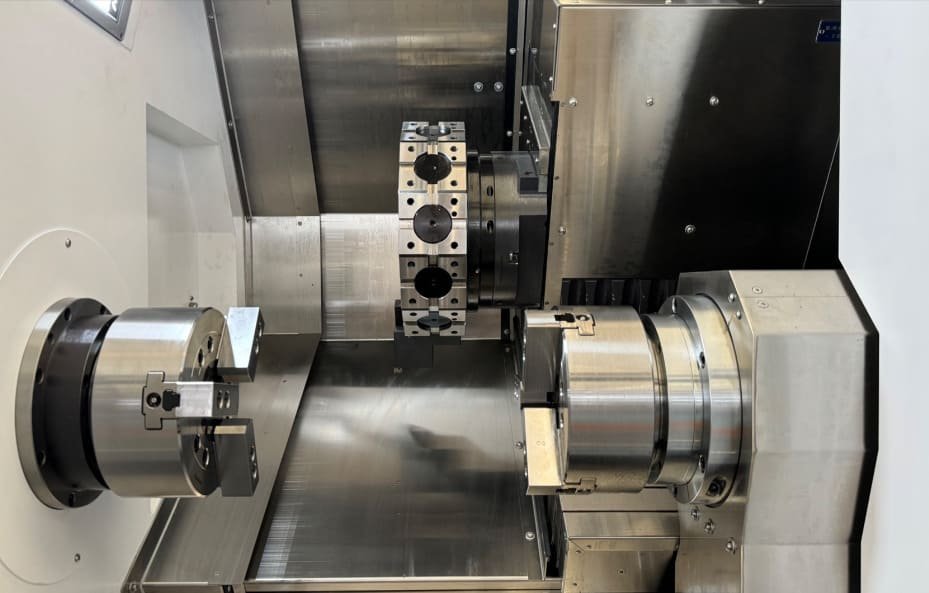
The exceptional performance of turn-milling machining is underpinned by a series of core technologies:
Multi-axis Linkage Control Technology
- Kinematic Transformation Algorithms: By establishing precise geometric error models and kinematic transformation matrices for five-axis machine tools, ultra-high precision calculation and compensation of tool center point trajectories are achieved. This effectively resolves common non-linear error issues in complex curved surface machining, improving positioning accuracy to ±3 micrometers (µm).
- Real-time Interpolation Control: Advanced look-ahead interpolation algorithms and sophisticated velocity planning techniques enable the synchronized coordination of five servo axes’ movements at nanometer (nm) resolution. This ensures high consistency in dynamic responses across all axes during high-speed machining, boosting machining efficiency by over 40%.
- Vibration Suppression Strategies: The development of adaptive damping control systems based on acceleration feedback effectively suppresses chatter phenomena that occur during multi-axis linkage. This allows the workpiece surface roughness to be controlled within Ra0.8 micrometers (µm), achieving extremely high surface finish.
Precision Measurement and Compensation Technology
- In-process Measurement Systems: Integrating high-precision measuring devices such as laser interferometers and ball bar systems enables automated detection and real-time compensation of machine tool geometric errors. This has led to a 60% improvement in spatial positioning accuracy, with repeatable positioning accuracy reaching 2 micrometers (µm).
- Thermal Deformation Compensation: By constructing a thermo mechanical coupled finite element model of the machine tool and utilizing a network of temperature sensors to collect real-time heat source data, errors caused by temperature changes, such as spindle thermal elongation, are dynamically compensated. This allows thermal errors to be precisely controlled within 5 micrometers/meter (µm/m), ensuring long-term stability.
- Tool Wear Monitoring: Employing acoustic emission sensors combined with machine learning algorithms enables real-time monitoring of tool conditions during the cutting process and accurate prediction of remaining tool life. This helps extend tool replacement cycles by 30%, optimizing tool management and reducing costs.
Mainstream Systems and Equipment
In the current market, Siemens and MAZAK are two leading brands in the field of turn milling systems and equipment. Both have gained widespread market recognition due to their advanced technologies and unique advantages.
Siemens 840D System
The Siemens 840D numerical control (NC) system is a preferred choice for high-end turn-milling machines due to its outstanding performance and flexibility:
High-Precision Control
Utilizing advanced digital drive technology and high speed data processing capabilities, it achieves nanometer (nm) interpolation accuracy. This makes it particularly suitable for the stringent requirements of complex surface machining in five-axis simultaneous operations, with dynamic response performance improved by over 30% compared to its predecessors.
Modular Architecture
The system supports up to 31 NC axes and spindle extensions, and enables multi-channel management through the HMI-Advanced human-machine interface. This means it can simultaneously control various compound process units such as turning, milling, and grinding, and is equipped with the Sinumerik MDynamics technology package to optimize cutting parameters and enhance machining efficiency.
Intelligent Functions
It integrates Artificial Intelligence (AI) algorithms for Adaptive Control (ACC), Process Monitoring (CMC), and Collision Avoidance (CBS). These functions can real-time adjust feed rates and spindle loads, for example, extending tool life by 40% in aerospace impeller machining, significantly reducing production costs and improving reliability.
MAZAK Turn-Milling Machines
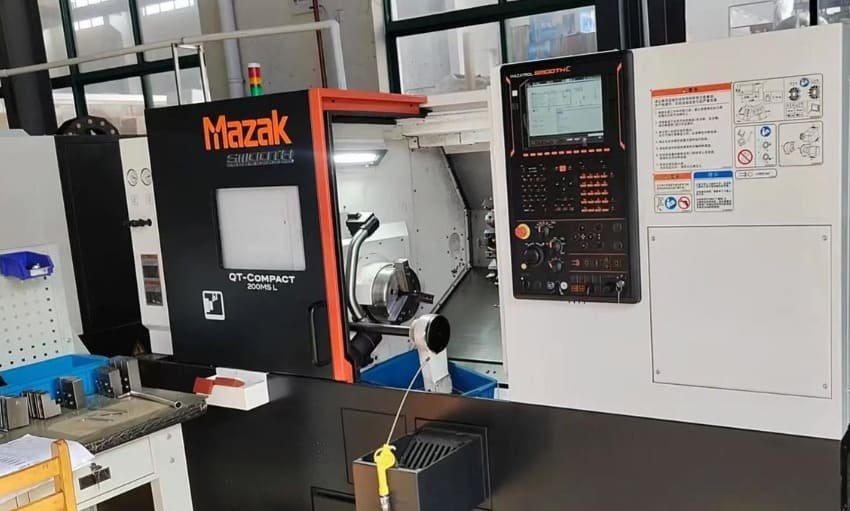
Japan’s MAZAK turn-milling machining centers are renowned for their integrated design philosophy, which significantly boosts the machining efficiency and precision of complex parts. Their key features include:
Integrated Machining Capability
A single machine can complete multiple processes such as turning, milling, and drilling, effectively reducing errors caused by workpiece transfers between different machines and multiple clamping operations.
Intelligent NC System
Equipped with the MAZATROL SmoothX system, which supports 3D simulation and adaptive cutting parameter adjustment. This system can intelligently optimize cutting conditions based on actual machining situations, ensuring both machining quality and efficiency.
Automated Tool Magazine Configuration
Standard configurations include over 40 tool positions and support HSK high-speed tool holders, with tool change times under 2 seconds. This makes MAZAK machines highly suitable for automated production needs involving large batches and diverse product types.
Turn-Milling Machining Programming Fundamentals
Programming for turn-milling machining is a critical step in achieving high-efficiency and high-precision manufacturing, involving several core stages and technologies:
Process Analysis Phase
Before programming, a comprehensive evaluation of the part’s geometric features, material properties, and final precision requirements must be conducted. Based on this, a prioritized machining list should be established. Special attention needs to be paid to analyzing potential interference risks in the turning and milling areas. By generating tool path conflict heat maps, a detailed segmented machining strategy can be formulated to ensure the safety and efficiency of the machining process.
Coordinate System Definition Standards
Turn-milling machining typically employs a dual coordinate system: the turning coordinate system (CS) and the milling workpiece coordinate system (WCS). The turning center is usually set at the center of the spindle face, while the milling origin is selected at the highest feature point of the part. All tool paths must include the G53.1 dynamic coordinate system compensation command to ensure precise tool positioning during the transition between turning and milling modes.
Code Standardization
Programming should adhere to the ISO 14649 standard for writing hybrid G-code. The turning section typically uses G71/G72 canned cycles, while the milling module utilizes G18/G19 plane selection commands. In critical operations, M codes need to be inserted to achieve precise spindle mode switching, and a Txxxxx compound tool numbering system should be configured to allow the machine to identify and call the correct compound tools.
Simulation and Optimization Technologies
- Virtual Debugging Systems: Digital twin environments, built using software like VERICUT, are employed to simulate the machining process with high precision, including machine tool dynamics. The focus is on detecting and avoiding singular points that may occur during five-axis
- simultaneous machining, with optimization leading to a 60% reduction in reversal impact. Additionally, an error compensation model incorporating spindle thermal deformation needs to be established to further enhance simulation accuracy.
- Cutting Parameter Optimization: Advanced optimization algorithms, such as genetic algorithms, are used for multi-objective optimization of axial depth of cut (AP) and radial stepover (AE). For instance, in typical steel machining, an axial depth of cut not exceeding 0.6 times the tool diameter is recommended, with radial stepover controlled between 0.3 mm (for finishing) and 2 mm (for roughing) to achieve optimal cutting performance and efficiency.
- Vibration Suppression Solutions: Fast Fourier Transform (FFT) analysis of spindle vibration spectra is used, and G05.4 Q1 smoothing commands are inserted into program blocks to suppress vibrations. For thin-walled part machining, a variable spindle speed cutting strategy (RPM fluctuation of ±15%) is recommended, which can effectively suppress chatter phenomena and ensure machining quality.
Current Technical Bottlenecks in Turn-Milling Machining
Despite the rapid development of turn-milling technology, it still faces several technical challenges, primarily in the following areas:
1. Thermal Deformation Compensation Challenges
Continuous operation of machine tools (e.g., after 8 hours) can lead to spindle thermal elongation of up to 0.02 millimeters (mm), which significantly impacts machining accuracy. The latest solutions combine granite bases with active cooling systems and real-time compensation using infrared temperature measurement. This has successfully controlled thermal drift to within ±0.001 millimeters/4 hours (mm/4h), substantially enhancing the long-term stability of the machine tool.
2. Vibration Suppression Technology
Chatter is a particularly prominent issue when machining difficult-to-cut materials like titanium alloys. Currently, the development of magnetorheological dampers and active vibration suppression algorithms has improved the cutting stability limit by 35%. For instance, a certain machine model can now achieve stable milling with an 8-millimeter (mm) depth of cut when machining TC4 material, demonstrating the potential of this technology in handling challenging material processing.
3. Software System Integration
Existing Computer-Aided Manufacturing (CAM) software still provides insufficient support for turn-milling machining, especially in tool path generation and interference avoidance. Siemens’ NX 2206 version introduced a new “Turn-Mill Synchronization” module, which can automatically generate interference-free tool paths, thereby increasing programming efficiency by 50% and effectively alleviating this bottleneck.
Application Areas of Turn-Mill Composite Machining
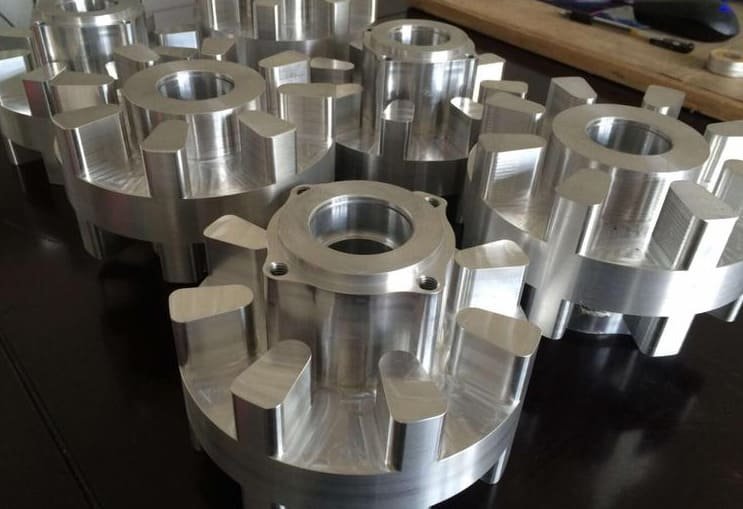
Turn-milling technology, owing to its unique advantages, is widely applied in various industries that demand extremely high precision, efficiency, and complexity in machining. These primarily include:
Aerospace
The aerospace sector has exceptionally stringent requirements for part precision, strength, and complexity, exemplified by aircraft engine blades, turbine disks, and structural components. Turn-milling machining centers are capable of efficiently and precisely manufacturing these complex hollow structures and irregularly shaped parts, making it an indispensable technology in aerospace manufacturing.
Automotive Manufacturing
In automotive manufacturing, critical engine components, transmission parts, and chassis components demand high machining precision and efficiency. Turn milling technology enables the precision machining of these parts, such as crankshafts, camshafts, and gears, significantly contributing to enhancing the overall performance and reliability of automobiles.
Medical Devices
The medical device industry has strict regulations regarding product biocompatibility, precision, and surface quality, as seen in orthopedic implants and surgical instruments. Turn-milling machining can meet these high standards, ensuring the reliability and safety of medical devices.
Mold and Die Manufacturing
Molds and dies are fundamental to industrial production, and their manufacturing precision directly impacts the quality of the final product. Turn milling machining offers significant advantages in machining mold cavities and complex curved surfaces, effectively improving the efficiency and precision of mold manufacturing and shortening mold development cycles.
Energy Equipment
In the manufacturing of energy equipment, such as wind power and nuclear power components, many critical parts are characterized by their large size and complexity. Turn-milling technology can effectively address these challenges, enhancing the machining efficiency and quality of large, complex parts and ensuring the stable operation of energy equipment.
Electronic Devices
Precision components in electronic devices, such as connectors and casings, also benefit from the high precision and efficiency of turn-milling machining. This technology ensures that these tiny and intricate components meet the required design accuracy, thereby improving the overall performance and reliability of electronic products.
Development Trends
As a vital component of advanced manufacturing technology, turn-milling technology is poised for significant future development, exhibiting several prominent trends:
Higher Integration and Intelligence
Future turn-milling machines will further enhance their integration, extending beyond just turning and milling to incorporate additional functionalities such as
grinding, laser processing, and additive manufacturing, achieving true “one stop” machining. Simultaneously, intelligence levels will significantly improve through the integration of advanced sensors, big data analytics, and artificial intelligence technologies. This will enable adaptive control, fault prediction and diagnosis, and optimization of machining parameters, thereby comprehensively elevating the automation and intelligence of machining processes.
Higher Precision and Efficiency
With continuous advancements in material science and tooling technology, coupled with ongoing optimization of machine tool structural design and control systems, turn-milling machines will achieve even higher machining precision and efficiency. High-speed, high-precision, and high-rigidity will remain constant pursuits to meet the stringent demands for ultimate precision in high-end manufacturing sectors like aerospace and medical industries.
Flexibility and Customized Production
In response to the growing demand for personalized and customized products, turn-milling machines will increasingly focus on enhancing their flexible production capabilities. Through rapid tool change systems, modular designs, and flexible fixturing, they will enable efficient conversion for small-batch, multi variety, and even single-piece production, thereby quickly responding to market changes.
Green Manufacturing and Sustainable Development
Future turn-milling technology will place greater emphasis on green manufacturing principles. This includes optimizing cutting parameters, adopting dry cutting or minimum quantity lubrication (MQL) techniques, improving energy utilization efficiency, and reducing waste generation. These efforts aim to minimize the environmental impact of machining processes and achieve sustainable development, aligning with global environmental trends.
Digitalization and Networking
Turn-milling machines will be deeply integrated into digital and networked manufacturing systems. Through seamless integration with CAD/CAM software, remote monitoring and diagnostics, and real-time production data sharing, they will contribute to building smart factories and digital workshops. This will enable comprehensive optimization and management of production processes, driving the manufacturing industry towards Industry 4.0.
Conclusion
Turn-milling technology, as a crucial development direction in modern manufacturing, plays a pivotal role in enhancing production efficiency, machining precision, and expanding machining capabilities due to its unique advantages. With continuous technological advancements, turn-milling machines will evolve towards higher integration, intelligence, precision, efficiency, flexibility, green manufacturing, and digitalization/networking, providing stronger support for high-end manufacturing sectors.
CNCPOR has imported 12 Mazak turn-mill composite machining devices from Japan. If you have projects that require custom high-precision parts, contact us at any time.
